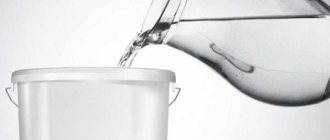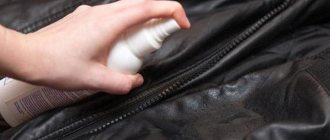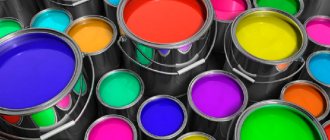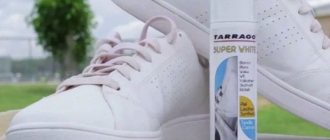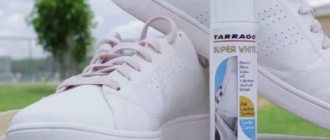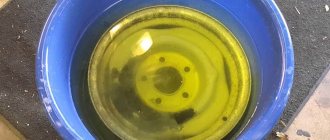The scope of application of acrylic paints is very wide. This material is used by both artists and builders. If an ordinary person opens a jar of acrylic, he may be surprised at the high density. Out of ignorance, many people immediately start working, which leads to a lot of problems in the future. Below you will find out why you need a solvent for acrylic paints and how to work with the substance correctly.
How and with what to dilute dried acrylic paint
Sometimes damage to acrylic paint cannot be avoided.
Sometimes the jar fails, and sometimes there is too much material left on the palette. In any case, I don’t want to throw it away at all. Acrylic paint has dried out, how to dilute it if it has acquired a “rubbery” consistency? In this case, you can simply add a little water to it. However, if the acrylic paint for painting has completely dried out, drastic measures will be required. There are a couple of ways to bring material back to life.
Several options for what you can do if acrylic paint has dried:
- The easiest way is to dilute it with a special product. So, if acrylic paint is dry, how to dilute it? For these purposes, a special acrylic thinner “Gamma” is suitable, which can be purchased at art stores. White spirit, an industrial composition for removing old paintwork for all types of paint, or solvent will also be effective. When diluting with special means, it is worth considering that they may not help if the acrylic paint has dried completely.
- There is a more radical way. A solid piece of acrylic must be ground into powder. It should be as small as possible. Then the powder must be heated in a water bath or diluted with boiling water.
- If hot water doesn't help, you can add alcohol or regular nail polish in small amounts.
Paint deteriorates irrevocably only when exposed to very low temperatures due to the polymerization of the acrylic emulsion in the composition.
However, despite the fact that in some cases acrylic can be reanimated relatively successfully, most experts strongly recommend disposing of the dried material. This is because restored paint irreversibly loses its unique properties. The adhesion to the surface will no longer be as good, the coating will become lumpy and uneven in consistency, the color will fade, and the paint itself will become less strong, stable and durable.
Restoring acrylic paint is quite a labor-intensive task, and the result may simply not be worth the effort spent on restoration.
Article rating:
How can you dilute acrylic paint for painting? Link to main publication
Related publications
How to varnish an airbrush design?
Decorative coating components
Before using this or that paint, it is advisable to understand what substances are included in it. After this, most likely, the problem of choosing a solvent will disappear by itself.
All acrylic paint mixtures have three main components:
- water;
- coloring pigment;
- binders.
The last ingredient in acrylic paint is a polymer emulsion, which contains acrylic. This determines the choice of name for the decorative material in question.
Paint has a very wide range of applications: from facade work to coating indoor surfaces. In this case, it practically does not matter what material is painted.
In addition, one of the features of a paint composition containing acrylic is its resistance to ultraviolet radiation. Therefore, the surface remains bright and attractive for a long time.
Well, the last advantages are the price, which makes the finishing material in question one of the most affordable on the market, and ease of use, which is especially important if you decide to carry out repairs yourself.
How to dilute acrylic paint for an airbrush. Airbrush paints - types and their properties
Paint guru➣Paints➣Types of paints➣
One of the surest ways to give any surface an expressive and unique appearance is to apply images using a special tool called an airbrush.
To ensure that they are of high quality and reliable, it is important to choose the right paints for the airbrush. Let's consider what they are and what features are characteristic of them
Currently, airbrushing is used not only for vehicle decoration. A variety of designs made using an airbrush can be found on walls and furniture, on computer equipment and even on smartphones.
If you have artistic talent, you can make such images yourself. The most important thing is to be very responsible when choosing paints suitable for an airbrush.
It is equally important to choose the right soil for this process. All paints intended for use with an airbrush can be divided into three large groups:
All paints intended for use with an airbrush can be divided into three large groups:
- water-soluble acrylic compounds;
- base urethane paints;
- multicomponent multistage compositions.
It is important to note that they all differ in the method of application. Thus, water-based acrylic products can be sprayed in either one or two stages - depending on the result you want to get.
One of the prerequisites for using urethane paints is varnishing. And multi-component paint compositions are always applied in three stages.
Features of acrylic compositions
One of the most popular and sought-after types of paints and varnishes are water-based acrylic airbrush paints. They are characterized by many advantages, among which are:
- a wide color palette - from neutral translucent shades to rich and bright ones;
- high level of hiding power, eliminating the need for multi-layer paint coating;
- good adhesion, which, in combination with a significant reserve of time for hardening, allows you to create interesting effects when applied;
- absolute non-toxicity due to its water-dispersed base;
- Possibility of use on almost any type of surface.
High-quality water-based acrylic airbrush paints are very convenient for DIY application. They are easy to dilute to obtain the required consistency by mixing with a certain amount of distilled water.
When such paint is completely dry, a thin plastic layer is formed on the surface of the painted product, which is both elastic and quite hard and durable.
To wash off such a coating, it is necessary to use special high-quality chemicals. This feature of acrylic paints is greatly appreciated by many artists, because it makes it possible to create drawings with interesting effects.
Nitroenamels - characteristic features
The main competitor of liquid acrylic paint for airbrushing is nitro enamel, which is very widely used in the design of automotive vehicles.
These tools also have many advantages and disadvantages that make your work much easier:
- They dry several times faster compared to acrylic products.
- With their help it is much easier to apply perfect thin lines.
- Using such tools, you can create translucent fills that look very impressive.
However, nitro paints are not without certain disadvantages. In particular, the tones and shades are less bright and expressive, and their hiding power is far from the best. Using two different colors, it is almost impossible to achieve a beautiful tone - to prevent the appearance of a grayish tint, you should use a light base.
Due to the fact that not all airbrush models are suitable for working with nitro paints, you should carefully study the information indicated on the packaging of the product you have chosen.
Please also note that nitro paint compositions are highly toxic. Therefore, it is recommended to use them in special boxes where high-quality ventilation is provided.
In addition, all work must be carried out in special equipment.
Since 2005, we've helped thousands of people get the perfect domain name
This is a simple affordable process and the support is excellent.
– Howard B. Esbin, January 28, 2021
I love their search feature because it gives immediate domain availability. And they are costs are slightly lower than a big competitor. The whole process is easy!
– Tom Rummel, January 27, 2021
We spoke with the employee and he was very nice and he gave us quick assistance. Honestly, you deserve 100,000 stars, not just five stars
– waid joudieh, January 26, 2021
When I called they answered within a few rings. This was an easy way to get a premium domain on a payment plan. Would recommend!
– Lance Johnson, January 25, 2021
A quick, easy and very straightforward service.
– Alex Rubio Navalon, January 25, 2021
See more tests
Turbocharge your website. Watch our video to learn how.
Types of solvents for acrylic paints
Acrylic-based paints and varnishes are dissolved with alcohols, ethers and hydrocarbon compounds. Experts divide them into several groups:
- Slow. They are produced at high temperatures, so after adding them the paint will dry more slowly. Such solvents help eliminate the roughness of the created layer and improve the fluidity of the paint to create a glossy surface. Such solvents must be used when working in rooms with low humidity levels and air temperatures above +25 degrees.
- Average. Such solvents should be used when carrying out finishing work indoors and outdoors at temperatures from +15 to +25 degrees with normal humidity levels.
- Fast. R-5, alcohols, solvents with a high evaporation rate. They are used when working at low temperatures. They ensure rapid adhesion of the painted surface to the paint layer and do not allow streaks to form. Paint dries quickly when using fast or volatile liquids, so dust does not have time to settle on the still wet surface of the created coating. In this case, you should work with brushes and rollers, since when using a spray gun, the paint begins to dry even before it comes into contact with the surface.
It is especially important to know which complex solvent for acrylic paints should be used when painting a car. You can create an even and durable coating from acrylic paints and varnishes using solvent R-12. It is used in cases where it is necessary to control the degree of spreading of a substance
If you store acrylic paints correctly, you will not have to use solvents. For such paintwork materials, it will be enough to use ordinary water for dilution. It is the ease of interaction with acrylic-based coatings, which do not require the use of complex solvents with strong odors, that has made them popular in construction.
Our channel in Yandex Zen:
Post Views: View statistics 446
General information
Next, we will look at the most popular of them, because the result and quality of your work will depend on the correct choice of solvent for acrylic paints.
Difference between thinner and solvent
Despite the fact that the words are very similar in meaning, incorrect use of these components can ruin not only the paint, but also the finished result. To avoid having to run to the store for a new can of paint, you should remember these differences.
The thinner does not particularly affect the quality of the product itself, but it changes the color saturation and also changes the thickness
It is important to remember that when using a thinner, the paint dries faster, and therefore you have to work with it in an accelerated mode
The solvent is useful when the task is to wash off paint from a surface or remove a dried layer. At the same time, acrylic becomes more liquid, and accordingly, the drying time increases significantly.
Types of solvents for acrylic paints
Acrylic is never used in its pure form for painting or finishing work. Due to rapid drying, there is a high probability of obtaining an uneven surface with marks from a brush or sponge. For the same reason, it is recommended to wash the tools used, especially brushes and rollers, immediately after finishing work. Otherwise, after the paint has dried, it will be easier to purchase new brushes than to clean the old ones.
When is it necessary to dilute water-based compositions?
Water emulsion is a water-based composition. It contains various fillers in the form of small droplets, which give the material its final properties. As the solution is applied to the surface, some of the liquid is absorbed and some evaporates. Due to the rapid removal of moisture, a protective layer is formed after a short period of time. Final drying depends on the surface material.
Nowadays there are various versions of water-based (water-dispersed) paint on sale. Many manufacturers produce products under their own brands. Therefore, it is advisable to dilute the mixture, taking into account the individual characteristics of each variety in the following cases:
If after opening it turns out that the solution is too thick, then it needs to be diluted. Determining that the consistency is not suitable for application is quite simple: to do this, mix the composition well. If a large amount of product remains on the stirring object and does not flow back, then the use of a solvent is necessary.
Currently, the market offers specialized spray guns for water-based paints, both electric and manual.
If the conditions of storage and use of products are violated. It happens that the container is not sealed tightly after opening. If the situation is not corrected in time, the material will become completely unusable. But at a certain stage, when the mixture has not yet dried, it can be restored.
How can I dilute it?
The marking of any acrylic paint indicates that before use it must be diluted with water and carefully moved with a mixer. This is due to the fact that any mixture on acrylic has increased density and thickness. If you do not follow the instructions, the material will be difficult to apply. Thick paintwork materials are pulled behind a roller or paint brush. Tools leave a mark that is difficult to smooth out. In addition, such a mixture will not stick to the wall so well. The compositions can be diluted with different substances.
Water solution
Most often, paintwork materials are mixed with water before work, because it is the main component of the mixture. Depending on the type of work, liquid is added in the following proportions:
- 10% by weight of the substance - this small volume allows you to well prepare the paintwork for final application;
- 1:1 – obtaining the composition for rough application;
- 1:2 – liquid substance suitable for repair and restoration of walls.
- 1:5 – liquid substance used for application to structural surfaces.
Special means
Special means used to dilute acrylic paints include pigments. All acrylic-based water-based compositions are supplied in the form of a white or transparent base. The combination of dyes will give the building material a new shade to suit your taste. Pigmentation can improve the physical characteristics of the material.
Solvents
Acrylic enamels are diluted with special solvents, because when painting by machine, diluting with water does not provide the necessary indicators for work. In addition to elasticity, when applied, solvents can increase the level of gloss or, conversely, impart matte properties.
Other paints
Sometimes there are cases when there are leftovers of several types of paints at once. The reluctance to go to the store for acrylic paint or an inquisitive mind force people to experiment by mixing different compositions. In this case, you need to look at the binder from which the paint and varnish is produced. In addition to acrylic, there are:
- silicate;
- silicone;
- oil
If there are mixtures of acrylic left, but of different colors, you can make one paint from them by adding water. However, the original tone will change. It is difficult to predict what shade will result from such a mixture.
In other cases, mixing materials of different compositions is not recommended. Because they are incompatible and will not dissolve into each other. As a result of this action, an unusable paintwork material will be obtained. During application, it will be noticeable that the liquid is divided into layers. And after application, there is a high probability that in a short period of time the coating will crack and peel off.
Conclusion
Before using acrylic paint, in most cases it must be diluted with water or a solvent. Using the tips given in the article, you can get material that best suits your needs. With its help, you can bring your wildest design fantasies to life.
You can learn more about painting from the video in this article.
Widely used in renovation work, both indoors and outdoors.
These mixtures are easy to use, but the point is that they have a thick consistency and must be diluted.
Otherwise, the coating will be uneven or too saturated. How to dilute acrylic paints to the required thickness and how to do this?
Acrylic paints appeared half a century ago. Since then they have gained well-deserved popularity.
These products can be used to paint any surface: wood, metal, and even. They have many advantages among other coloring substances, including:
- An environmentally friendly substance, it is safe because it does not contain elements that poison the environment.
- They are easy to work with because they do not have a bad smell.
- They have a huge number of different color shades, which is not found in other types.
- The mixture dries quickly and you don't have to wait long to use the painted item.
- The surface after painting becomes smooth, it is easy to clean, and the paint does not wear off.
- Dust and dirt do not accumulate on it.
- The painted area “breathes” but does not allow moisture to pass through.
- The paint is of high quality and does not require renewal for 10 years.
The composition of the mixture is as follows:
- coloring pigment
- connecting elements
The role of the binding element is played by an acrylic-based polymer emulsion, hence the name of the mixture in question.
What to do if acrylic paint has dried out?
Anyone can face this problem. Paint dries out for various reasons. This may be a container that is not tightly closed, due to which the water has evaporated, as well as improper storage. It is impossible to return the previous state; you can only make the composition suitable for further coloring, but with a loss of quality. After drying, it is not recommended to use reclaimed paint for painting important areas.
First you need to find out the cause of dryness. If a substance has dried out due to non-compliance with storage conditions, then it cannot be restored. It is not advisable to use dried paint after its shelf life, although you can try to restore it.
Dried paint due to water evaporation can be restored by following the instructions.
- First you need to thoroughly grind the dried paint until a powder forms.
- After this, the powder is poured with boiling water to warm the mass.
- After some time, the water is drained, the mass should remain hot.
- After draining, the mass is again poured with boiling water and stirred.
- The paint will be ready as soon as the mixture is warm enough.
READ MORE: AEG oven installation features of electric built-in models How to choose an oven with steam and microwave How to correctly set the time on the steam oven What to do if your acrylic paints have dried out? After all, quite often after painting there is a little mixture left, and it’s a shame to throw it away. Over time, it begins to thicken greatly. But this is not a reason to be upset, since acrylic, unlike other types of paints, can be restored. Here are some useful and effective recommendations:
- Initially, you need to determine the extent to which the paint has dried. After all, if it dries out a little, it is much easier to restore it.
- If the mixture has not thickened much, but there are already clots, simply dilute it with water or a special thinner. In this case, you can add a little alcohol to the water.
- If the paint has dried out excessively, to the point of hardening, do not be discouraged! The situation can be fixed. So, you need to take a sharp tool and try to crack the hardened areas. Then grind them to a powder. Next, heat the water to a boil and pour it into the jar with the crumbs. After waiting for 20-30 seconds, drain the boiling water and add a new portion of water. Do this 3-4 times. During the last pour, leave the water in the jar and mix with the powdery mass. Such diluted paint has reduced characteristics, but if there is no other option, then you can use it. In order to improve the performance and properties, you can add a very small amount of boiling water, and after mixing, add a factory thinner.
- If acrylic paint has thickened and turned into one solid lump, then it is better to throw it away, because it has practically not retained its properties. However, there are situations when paint is simply necessary. For example, for painting a bench on the street, a table in the country, and so on. In this case, you can revive it in the same way as the previous one. But with the difference that the last time you need to dissolve the crumbled paint not just with boiling water, but with the addition of alcohol.
Before diluting the acrylic paint, prepare all the necessary components.
- dry dye is removed from the container;
- the dried pieces are first crushed to a powdery state;
- The powder is placed in a wide-necked container, poured with hot water and stirred.
- after 5-10 minutes the mixture is drained and the procedure is repeated several times.
- the resulting substance is passed through a filter to remove undissolved particles. For this purpose, you can use regular gauze folded in several layers.
When using solvents, it is worth remembering that for dilution they are added to the paint in small portions, and not vice versa.
Preparing for work
If you decide to use acrylic dyes to achieve your goals, then you need to start preparing. Their beauty lies in their wide range of applications. You can create works of art by painting pictures, use them in repairs and decoration, and such paints can even be used for furniture restoration.
But using acrylic paint in its pure form will not bring the desired effect. Due to the thickness of the dye, the painted surface will reflect the relief pattern of the instrument with which the composition is applied. Therefore, diluted solutions are used.
Dyes are produced for various purposes: for external or internal work, for creating paintings by numbers
Therefore, when answering the question of how to dilute acrylic paint for walls, it is important to study the instructions. The thinner can be either water or acrylic solvent.
Before diluting acrylic paint with water, you need to make sure that there are no impurities in it, and the temperature is no more than 18-20o
You will need to prepare small containers for test dilution. The main thing is that you can use them to determine the amount of ingredients used.
Before diluting acrylic paint with water, you need to make sure that there are no impurities in it, and the temperature is no more than 18-20o. You will need to prepare small containers for test dilution. The main thing is that you can use them to determine the amount of ingredients used.
Experienced craftsmen identify several basic proportions for diluted paint; you can mix it in different ways after experimenting:
- When choosing a ratio of one part water to one part purchased paint, there is no longer the appearance of clots on the painting tool. The surface color is smooth and uniform, but the composition consumption is quite high.
- If the amount of water is doubled, the paint dissolves and becomes quite liquid. Completely saturates the instrument. This composition is easy to apply to a brush, ideal for smooth surfaces.
- When adding one part base to five parts water, the substance becomes too liquid. It is used to paint those elements whose texture needs to be emphasized, or parts with complex geometry are selected for painting.
- When diluted to a ratio of one to fifteen, colored water is obtained. It is used to create gradient transitions.
Related article: Features of do-it-yourself powder painting
Some manufacturers recommend using only special solvents for acrylic as a thinner. Otherwise, the paint will become like rubber. Therefore, when choosing how to dilute acrylic paint, you should carefully read the instructions.
Whatever you choose, the method for diluting acrylic is the same:
- Prepare containers of sufficient volume and measuring rulers.
- Pour the required amount of base paint into it, check the level with a ruler, and mix.
- Prepare the required volume of liquid for dilution, and check its quantity.
- Slowly add acrylic paint thinner to the base mixture, stirring continuously to obtain a homogeneous mixture.
- If you need acrylic enamel with strictly defined parameters, for example, for painting a car part, use a viscometer to determine the viscosity.
- If necessary, filter the solution.
Despite the fact that the composition is mainly water-based, once acrylic paint has dried, it is very difficult to remove. The tool used must be immediately washed in soapy water or a solvent for acrylic paints must be used. Otherwise, it will not be possible to soak the instruments; they will become unusable.
Water
Water acts as the main diluent. Only cold and clean water is used, without foreign impurities. Before adding water to the paint, collect water and let it sit for several hours to avoid the ingress of solid particles. Using a special mixer, the mixture is brought to the desired consistency. The coating acquires water-repellent properties; all used brushes and other tools must be washed after painting. Otherwise, they will dry out and become unusable.
Water dilutes the paint without changing its properties. The layer is durable; only the saturation and brightness vary. When heavily diluted, the coating becomes translucent. Please note that after drying the paint may change slightly in color.
, so first apply it to a small area and observe the final result. If everything is satisfactory, then the entire surface is painted.
Features of dilution with water
Before diluting acrylic, you need to conduct a preliminary test to determine the desired proportions. Water is diluted in the following ratio: one to one, two, five, fifteen.
How to dilute paint?
To dilute the selected material with water, there is no need to use complex equipment. To work you will need a simple set of devices:
- clean container of suitable size;
- drill with mixer attachment;
- small spatula (if you need to remove lumps).
Breeding scheme:
- The paint is poured into the container. The process is carried out carefully, the composition is mixed a little.
- Water is added gradually. Even taking into account the proportions specified by the manufacturer, it is better to constantly check the viscosity.
- After adding each portion, everything is thoroughly mixed. If lumps are visible, it means that uniformity has not yet been achieved.
It should be borne in mind that the volume is affected by color, so it is added diluted in liquid.
What is the difference between solvent and thinner
Before choosing one of these tools to solve the problem, it is worth understanding their differences and features. The solvent is a volatile liquid of organic origin, such as alcohol or ether. It can also be a mixture of these liquids. Used to dissolve film-forming substances and give paints the desired consistency.
Thinner also refers to volatile liquids of an organic nature, used to reduce the viscosity of the paint composition, thereby achieving a consistency suitable for good application to the surface.
The liquids are quite similar, so they are often confused. Solvents are often used in the manufacture of paint and are introduced at the production stage. The basis of the paint and varnish material is a solid or viscous substance. Therefore, the solvent allows you to achieve a form of composition that is convenient for work. When this substance is added, the paint will remain in a liquid state and will not dry until the surface is covered with it. Due to the ability to influence the structure of the composition, the solvent is a rather aggressive product.
Thinners are not so aggressive. Their composition does not dissolve the resin, they only dilute it to the desired degree of viscosity. The key task is dilution. That is, a change in viscosity, but not structure, which is why they are more gentle.
Solvents are often used in the manufacture of paint and are introduced at the production stage.
What is better to use, is it possible with water?
When the composition has dried, the question arises of how to dilute the acrylic paints. Due to the fact that they contain quite a lot of water, it can also be used to change the consistency for the better.
If the material is dry, water will not help. When added to a jar, a suspension is formed consisting of pigments and acrylic particles in a liquid. The material will lose strength and coils of composition will appear on the surface.
Acrylic can be diluted with water. But, only strictly observing certain proportions and doing it once. You won't be able to use this method all the time.
Acrylic can be diluted with water. But, only strictly observing certain proportions and doing it once.
When selecting the appropriate dilution mixture, it is important to consider many factors, including:
- Temperature. The room temperature should be in the range from 15°C to 20°C;
- Compound. You should know the degree of purification of the substance with which you plan to dilute it. No impurities are allowed. In the case of water, it must be settled or distilled;
- Proportions. If you make mistakes, then the consistency will be too thick or liquid. The quality of the material will be damaged.
You should know the degree of purification of the substance with which you plan to dilute it.
In addition to water, thinners and solvents can be used. There are several main groups that are used for coatings:
- Artistic. They are used for finishing work in the interior and in painting.
- Specialized. Issued for specific areas and take into account the characteristics of these sectors.
- Universal. Can be used for any acrylic paint, regardless of its application.
Solutions are also divided according to the degree of drying:
- Slow. Can be used in high temperature conditions. Allows you to slow down the drying of the composition.
- Average. Used at temperatures from 15°C to 25°C.
- Fast. Can be used at low temperatures, down to -15°C.
The latter option is suitable for paints used for painting facades.
Universal thinners can be used for any acrylic paint, regardless of its area of application.
When choosing what exactly to dilute the composition with, you should rely on the following recommendations:
- When working indoors and painting walls and ceilings, you should use water as a thinner;
- For working with furniture or wood, thinning agents are suitable to improve the interaction between paint and wood;
- A solvent is suitable for metal.
It is worth taking into account the surface on which the composition is applied and the desired effect.
When working with furniture or wood, thinning agents are suitable to improve the interaction between paint and wood.
In what cases is it necessary to dilute the composition?
Before diluting water-based paint, you should always read the manufacturer's instructions on the packaging. From the name of the product, it becomes clear to most users that it can be diluted with water. But there may be serious restrictions, both in the quantity and composition of the liquid. And a reliable, reputable manufacturer always honestly warns about all cases.
Detailed instructions for using paint from the manufacturer Source homemasters.ru
In order to determine the need to dilute the water-based emulsion, it is enough to pay attention to its thickness. It depends on how much water was placed in the composition during manufacture or how much of it has already evaporated
And paint with the viscosity of thick sour cream usually goes on sale.
The jar with the coloring composition is opened and the contents are thoroughly mixed. This must be done with a wooden oar and for at least 5 minutes. The working density is determined by the flow of the composition from the mixer. If, when lifting the oar above the surface, the paint remains on it in the form of a thick layer, then dilution with water is required. When the liquid quickly flows back into the jar and only a thin layer remains on the surface, then you can immediately work with the composition.
Determining the density of the paletteSource design-homes.ru
The need for dilution is influenced by the method of application to the surface. To work with a brush or roller, the consistency of the product must be sufficiently viscous. This is required to ensure uniform application and eliminate paint smudges on the surface.
When choosing a spray gun, the paint must be brought to a state in which it can easily pass through the nozzle. And to do this, you always need to reduce its viscosity by 1.5-2 times from the original one. If you choose the right proportions, you don’t have to worry that the paint will spread over the surface. High pressure and separation when leaving the nozzle into suspension allows the composition to lie more evenly and densely on the plane. The main thing is not to overdo it with dilution.
There are situations when paint storage rules are violated. This usually happens when the container is not tightly closed. The slightest gap allows evaporation to occur and the water emulsion begins to thicken. If this is not prevented, then the composition becomes completely unusable, simply drying out.
View of paint dried in a canSource pxhere.com
But when trouble is noticed in time, the paint can be saved. Just add water to it and mix thoroughly. If the components have not yet dried, they return to their performance characteristics. And you can safely paint your plans with the composition, following all the manufacturer’s recommendations.
Many beginners do not know what to do if a large amount of water was added during dilution. When, when stirring, the composition flows very quickly from the oar and does not even have time to gain a foothold on the surface. For this case, there are special thickeners that are added in strict accordance with the instructions.
But if time permits, then you can take a simpler path. To do this, take a break from work and leave the paint container open. Evaporation will do its job on its own. It is only necessary to regularly check the degree of consistency. And having found the one you need, you can immediately start painting.
Applying paint to the wall with a rollerSource vyborok.com
FAQs
Once you purchase the domain we will push it into an account for you at our registrar, NameBright.com, we will then send you an email with your NameBright username and password. In most cases access to the domain will be available within one to two hours of purchase, however access to domains purchased after business hours will be available within the next business day.
Yes you can transfer your domain to any registrar or hosting company once you have purchased it. Since domain transfers are a manual process, it can take up to 48 hours to transfer the domain.
Once you have received access to your account with the domain's current registrar you will be able to move the domain to any registrar of your choosing.
* When a domain is purchased on a payment plan, a registrar-lock is placed on the domain until all payments have been made. This registrar-lock prevents transfers.
Nothing else is included with the purchase of the domain name. Our registrar NameBright.com does offer email packages for a yearly fee, however you will need to find hosting and web design services on your own.
Yes we offer payment plans for up to 12 months. See details.
If you wish the domain ownership information to be private, add WhoIs Privacy Protection to your domain. This hides your personal information from the general public.
To add privacy protection to your domain, do so within your registrar account. NameBright offers WhoIs Privacy Protection for free for the first year, and then for a small fee for subsequent years.
Whois information is not updated immediately. It typically takes several hours for Whois data to update, and different registrars are faster than others. Usually your Whois information will be fully updated within two days.
It's easy to think a domain name and a website are the same. While they are related, they are very different things.
• A domain name is like the address of your home. It just tells people where to go to find you. • Websites are the code and content that you provide. • A web host is a service that provides technology, allowing your website to be seen on the Internet.
Features of water-based paints
Before answering our main question, you should have a good understanding of what a water-based emulsion is.
Water-based paint is an environmentally friendly paint and varnish material, the binding element of which is water. It is thanks to its distinctive composition that this type of paint is well suited for interior and exterior decoration of buildings and houses.
The obvious advantages of emulsion paint are:
- possibility of painting any wall surfaces (with putty or wallpaper, drywall, wood or concrete),
- environmentally friendly (does not harm health even over time),
- ease of use,
- durability (does not peel off or crumble).
Agree, the positive points listed above are valuable arguments in favor of purchasing water-based paint.
Coloring
Acrylic paints are suitable for a wide range of surfaces and are easier to use in the early stages of a job than any traditional medium. They can be applied to almost anything. Typically acrylic is used on the following surfaces:
- tree;
- chipboard;
- plaster;
- metal;
- canvas.
There is an important exception: synthetic resins do not adhere to oily substrates. Wooden boards are a good support for acrylic
If a smooth finish is desired, it is best to sand the wood first
Wooden boards are a good support for acrylic. If a smooth finish is desired, it is best to sand the wood first.
Acrylic paints are great for interior painting because they dry evenly. Oils are worse on these surfaces because some colors become dull while others remain shiny and reflect light. Additionally, any lingering oil on the plaster will significantly change the color and shade. It is recommended to sand the plaster well before applying paint.
When working with brushes, special care must be taken as the paint dries quickly and becomes hard as stone. As soon as they are used, they should be rinsed thoroughly with water so that no pigment remains between the hairs.
Hot water dissolves paint better.
Acrylic - happiness for the artist
Acrylic is a wonderful invention for both artists and painting enthusiasts. Relatively inexpensive price, availability, rich color palette, harmlessness and virtual absence of toxic substances and pungent odors, all this makes this paint almost universal. If not for one “but”.
Come to a FREE master class and receive a gift for participating!
Come to a FREE master class and start painting in oils, and also receive a gift for registration!
Acrylic paint is perfect for those who do not like to wait a long time, but want to immediately admire the finished result. As you know, acrylic is a quick-drying paint. But it is precisely this property that has a downside - the paint can dry right in the tube and you will have to buy a new one. How can this be avoided? How to revive dried acrylic paints?
By the way, how to avoid this, how to work with acrylic and all other points we discuss in detail in my course “Interior painting”
In this course we learn to paint beautiful paintings that fit perfectly into any interior. This is a very comprehensive course in which you will learn to work in modern acrylic painting techniques and with elements of picture decor.
After completing the course, you can save tens of thousands of rubles on gifts and home improvement by learning how to create expensive, atmospheric paintings that will decorate your entire home.
And perhaps not only yours. Since interior painting is currently the most profitable art form?
You can find out more about the course via the link - https://ndlr.cc/huGgl6b5_ or on the website https://nyschool.ru/interior_painting?utm_source=seo&utm_medium=blog&utm_campaign=allseo
Types of solvents for acrylic paints
Alcohols, esters and hydrocarbons (petroleum distillation products) can be used as solvents for acrylic paints.
Solvents are classified into several types:
- Slow (heavy) - Body 741, Body 742. They are made from substances with a high boiling point, so the drying rate of the coating after their addition is reduced. Slow solvents prevent roughness and provide good flow, which is necessary for a glossy finish. If painting work is carried out at elevated temperatures (above +25°C) and low humidity, then the use of heavy additives for acrylic is mandatory. They are also used when painting a large surface of a car.
- Medium (universal) - P-12, Body 740. Solvents of this type are suitable for external and internal work under normal conditions (+15...+25°C, humidity 50-80%).
- Fast (light) - R-5, alcohols, solvents. Solvents with the highest evaporation rates are used at lower temperatures. They provide quick adhesion to the base layer, prevent the formation of streaks and dust settling on the drying coating. When working with a spray gun, the particles of the mixture with a fast solvent harden before contacting the surface, so the strength of the coating decreases. Light additives are used mainly when painting small parts.
solvents for acrylic paints
The most common in the construction and auto repair industry are complex solvents: R-4, R-5, R-12, etc. They include toluene, acetone, butyl acetate, xylene, ethylcellosol, solvent, cyclohexanone and alcohols.
They are used to control the flow of acrylic enamels, paints and varnishes. For example, P-5 is suitable for painting and most types of coatings, while P-12 is used primarily for painting cars.
In the artistic environment, acrylic thinners are more often used - Tamiya, Khimik, etc.
Causes of drying out
Thick acrylic paint is quite common, as manufacturers produce it in this form. But its service life is limited by time. The only reason for this composition to dry out is the evaporation of the solvent. A decrease in its concentration leads to hardening of the acrylic resin, which at the same time begins to bind the pigment.
If the paints are completely dry, you can try to revive them. This process is quite simple and involves several sequential operations:
- Initially, you need to thoroughly grind the dry solution.
- After this, boiling water is added to it. An alternative could be a water bath. But technically these are the same algorithm.
